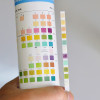
 IJCP Editorial Team
IJCP Editorial Team
Supplemental Oxygen in the Newborn: Historical Perspective and Current Trends
Oxygen is the final electron acceptor in aerobic respiration, whose scarcity may cause bioenergetic failure and cell death. Thus, administration of supplemental concentrations of oxygen to overcome barriers to tissue oxygen delivery (e.g., heart failure, lung disease, ischemia) saves dying cells in low cellular oxygen content conditions.
Yet, oxygen delivery and consumption balance depend on tightly controlled oxygen gradients and compartmentalized redox potential.
Although therapeutic oxygen delivery can be life-saving, it may disrupt growth and development, impair bioenergetic function, and induce inflammation.
Preterm and term newborns are special populations having decreased antioxidant capacity and reliance on redox signaling for rapid growth and development. They are particularly vulnerable to hyperoxic injury due to oxidative stress.
Even after advances in neonatal care, supplemental oxygen remains the most commonly used drug in the NICU.
The application of oxygen in neonatal medicine has seen a dramatic pendulum swing, from universal use both in the delivery room and beyond to intense restriction due to retinal disease concerns.
The introduction of the pulse oximeter to initial newborn resuscitation and the NICU has permitted targeted oxygen therapy, while broad international collaboration has resulted in comprehensive data to support current guidelines. Still, pulse oximetry supplies little information for making therapeutic decisions, and supplemental oxygen remains a blunt and untargeted therapy.
Future strategies must optimize oxygen delivery and minimize oxidative damage by utilizing NIRS monitoring or cellular, organ-and patient-specific antioxidant therapies.
Mathias M, Chang J, Perez M, Saugstad O. Supplemental Oxygen in the Newborn: Historical Perspective and Current Trends. Antioxidants (Basel). 2021 Nov 25;10(12):1879. DOI: 10.3390/antiox10121879. PMID: 34942982; PMCID: PMC8698336.

IJCP Editorial Team
Comprising seasoned professionals and experts from the medical field, the IJCP editorial team is dedicated to delivering timely and accurate content and thriving to provide attention-grabbing information for the readers. What sets them apart are their diverse expertise, spanning academia, research, and clinical practice, and their dedication to upholding the highest standards of quality and integrity. With a wealth of experience and a commitment to excellence, the IJCP editorial team strives to provide valuable perspectives, the latest trends, and in-depth analyses across various medical domains, all in a way that keeps you interested and engaged.












Please login to comment on this article